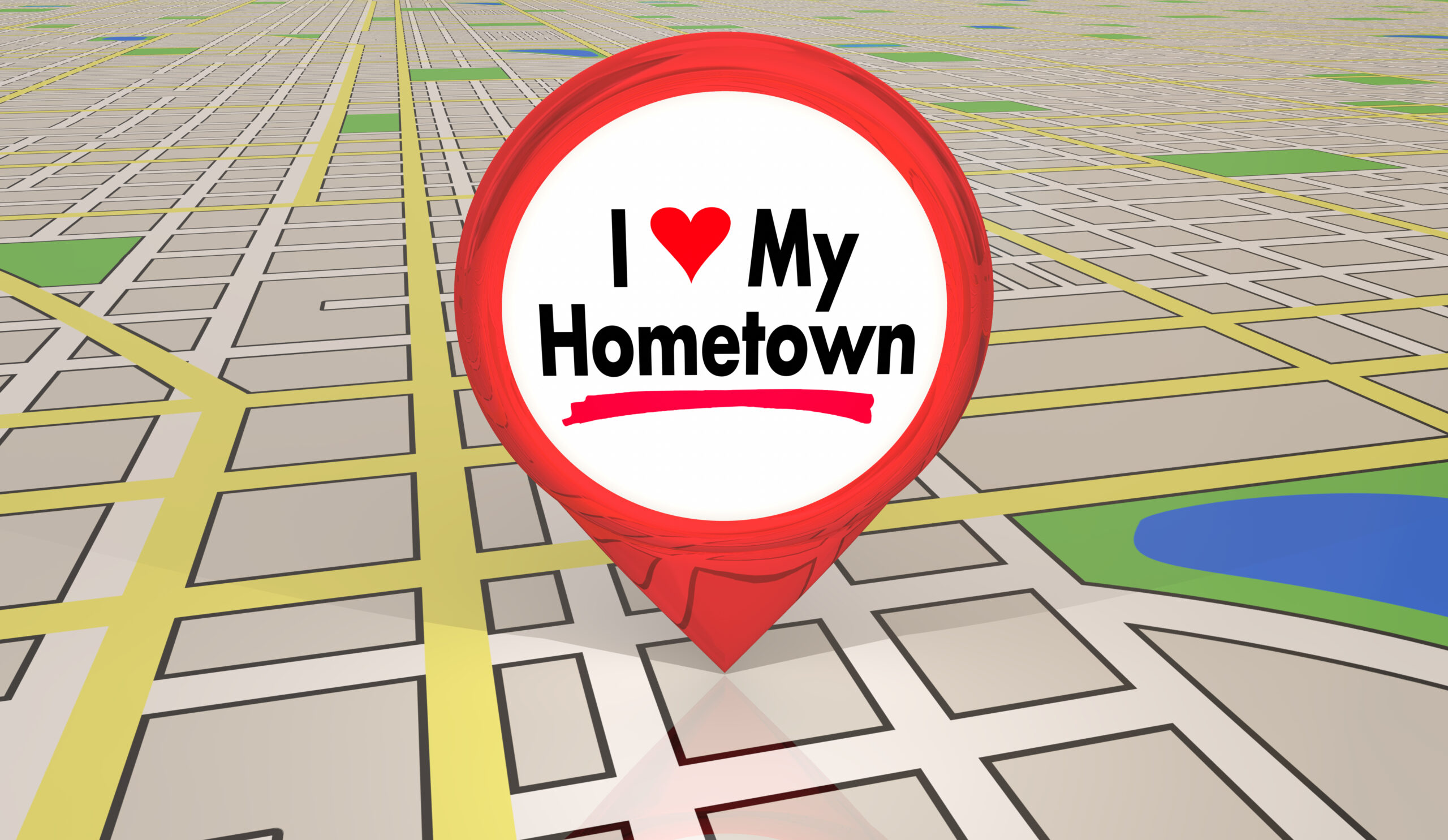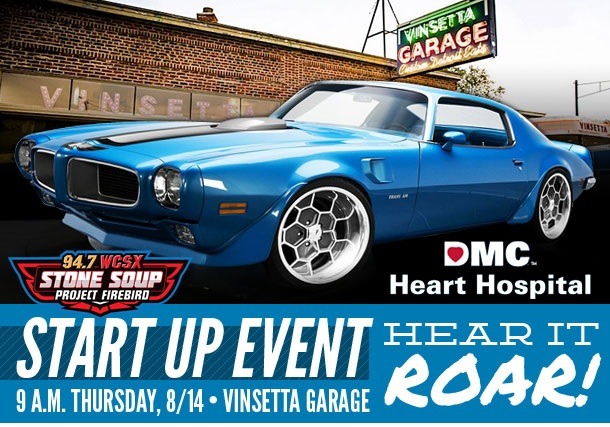I find it fascinating that one of the topics we often debate in radio is the intrinsic value of “local.” To me, it’s a no-brainer, especially in a world where entertainment and content have no geographical home. The stuff we listen to can originate from anywhere for people all over the U.S. and the world to enjoy.
Often when I watch a film that appears to be set in a midwestern American city, the credits might reveal the shooting actually took place somewhere in Canada. After all, who’s going to notice? And filming in Vancouver or Toronto is going to be cheaper than L.A. or Chicago. I get it.
But people have a sense of hometown pride that has only grown in recent years, thanks in no small part to the pandemic. But even had COVID never happened, there was a decided shift going on where the arrows were already pointing in the “local” direction. You’ll get that sense in today’s #TBT post, going back nine long years to March of 2015. You’ll see some of the call letters and name references are definitely dated. But the post’s theme is not.
The homefront matters…more and more. Our Techsurveys continue to confirm that fact. But this is nothing new. People have a deep sense of place, even as mobility allows us to live in Shreveport but work in Sioux Falls. Or live in Chicago but commute to New York City each week for their jobs. Or program radio stations in three cities in three states. The technology enables this flexibility.
But that doesn’t alter how one is rooted to where they live – or lived. I remember thinking when Bruce Springsteen released “My Hometown” in 1980 on his Born in the U.S.A. release which turned out to be the seventh top 10 single from that iconic album. You just knew that song would pay residuals in concerts all over America – and the world – because we can all relate to where we come from.
For us in radio, striving to drive home our differences continues to be as important of the medium’s ability to survive – and thrive. Local is a key.
“Son, take a good look around. This is your hometown.” – FJ
March 2015
We talk a lot about the value of radio focusing on the local heartbeat. And in a great feature on This American Life, host Ira Glass exposes city-themed songs for being similar to generic jingle packages that are localized for dozens of different markets.
In “No Place Like Home,” Glass talks to Ken, a long-time resident of Calgary, who grew up loving what he thought was his city’s signature theme song, “Hello, Calgary.”
The first eight minutes of this feature humorously show Ken learning that the song that helped instill an intense sense of pride in his hometown of Calgary has actually been used (with only minor alterations) in 100 or so markets and regions across North America. Once he learns the truth, he’s devastated. (You can listen to it here.)
But the underlying takeaway from the feature is that the sense of attachment and love one has for their hometown is powerful, creating deep feelings of attachment, pride and loyalty.
Glass notes that despite the fact that “Hello” has been produced for scores of different towns, “I think the fact that this works, that you could have a song and have all these local places attached, and have people really like it…I think it shows that people want to connect to a song like that.”
And Frank Gari, the musician and composer who wrote what could be the most popular theme of its kind in history, reveals the secret to “Hello’s” success is that “People want to attach to a positive vibe about the place where they live.”
So what does this tell us about local radio at a time when so many of the biggest media stories are focused on global, Internet brands that are anything but hometown flavored?
It strongly suggests that the opportunity to embrace the local spirit, vibe, and ethos has never been stronger.
In his investor call last week, Townsquare CEO Steven Price reported on how his company saw a nearly 10% revenue increase in Q4, with local up 5.6%. A big part of the Townsquare strategy focuses on revenue derived from digital and live events. Local advertising revenue goes right to the heart of Townsquare’s success.
And in explaining his company’s strong performance, Price noted that radio can offer “the ability to feel connected to a community, to know what the DJs and other people in your community think about the music.” For Townsquare, considerable revenue is derived from a wide variety of live and local festivals in their local communities. And as Price noted, “98% of our events make money.”
Townsquare may be proving that there’s an advantage in connecting with people in smaller markets. But the local themes that permeate “Hello” are universal, whether you’re from Dallas, Dubuque, or Detroit.
The Ira Glass feature suggests that size doesn’t matter – that your local, hometown environs is meaningful and poignant, no matter where you live or grew up.
And a great live and local event fills many needs, including the obvious revenue benefits. But hometown festivals, concerts, bridal fairs, and business breakfasts are so much more. They offer stations and their personalities a chance to make that all-important face-to-face impression. We continue to hear in focus and L.A.B. groups from fans who clearly recall DJ and station encounters that took place years or even decades ago. From WDRV’s world famous “Birthday Concerts” to WCSX’s “Stone Soup Project” to the Atlantic City Beer & Music Festival presented by WZXL, these community encounters matter and are valued by local residents.
These opportunities to connect are meaningful and often indelible. In much the same way politicians benefit from a strong grassroots “retail” effort, so do local radio stations – especially in the new competitive arena that has become a potpourri of global brands, platforms, and services.
Local matters. And as so many broadcasters default to syndication in multiple dayparts, voicetracking, and national promotions, authentic hometown stations have an even greater opportunity to achieve eye contact and an emotional bond with listeners in markets where the diaries or meters are placed.
All of this proves once again there’s no place like Calgary. (Or Chicago or Chattanooga or Carson City).
Thanks to Larry Rosin for the inspiration.
On another note, I’ll be talking all about the local opportunity at the NAB Show next month in Vegas. It’s a “Sip & Speak: How Radio Can Embrace its Local Markets Roots”/Ted Talk and it’s Tuesday, at 3pm. Apparently, the format is you sip (something) and I speak. Hope to see you there. – FJ
- How Will Radio Fare In The Battle For The Fourth Screen? - April 3, 2025
- Like A Pair Of Old Jeans - April 2, 2025
- What’s Fair Is Fair - April 1, 2025







The best part of my job is giving back to the local community. Good to be out in person with people who love the station. Great to meet listeners who become more than fans but friends. That’s why I do so many charity events. Blessed to have the job that I have.
And you are one of the best pracitioners of the art of connecting with the community. Thanks for commenting.
A C-Suite executive at a major international corporation, that makes toothpaste, detergent, diapers (both for infants and adults), not to mention paper towels, and toilet paper, once asked me, “Darryl. Can you explain to me why when the entire advertising world is moving toward more personalized advertising (meaning not only local, but crafted to the individual), radio is moving in the opposite direction?”
I shrugged.
Regarding your “song for the city,” WZPH, Zephyrhills, FL. USA, Earth, Milky Way
Plays a local hit:
“I Heart Zephyrhills” by Dr. M.j. Price
There’s also been quite an enduring nostalgia factor with Hello News: Perhaps most notably, the Quad Cities’ KWQC brought it back again late last year, as part of the station’s upcoming 75th anniversary. Not only did the station create new image spots, but the actual theme package was also re-added to the newscasts. Ironically, the station initially started using Hello News in the early ’90s–long after it was used in many other Midwestern markets (including just up the road, on Cedar Rapids’ KGAN).
https://www.kwqc.com/video/2023/10/31/hello-again-kwqc-brings-back-hello-campaign
Local? Of course it works! In 1958 the first station I worked for had a series of “Quality Jingles” -a company from Texas that would sing jingles for $5 a pop. They were cheesy, but they did say the name of our city correctly. Natives call it “rochister” (say it fast-all together). Newcomers always referred to it as “RAH-ches-ter”. Fast forward to 1976 when our (then) GM Dan Clayton connected with Joseph Heller to create a “local” package for WBBF– in “Rochister”. One of the jingles, really long, included many of the local towns and personalities. A great attempt -but failed in places like “Riga”- (pronounced “RYE’-guh”) and Rochester itself. Heller did a great job with some very complicated names but we did have to use the razor blade a few times. See if YOU can find a rhyme for “Irondequoit”. Mr. Heller’s jingles are online -and very interesting. Local STILL works.
WAIT! That “Hello Calgary” spot wasn’t made exclusively for SAN DIEGO??? Could have fooled me…and it DID! Wow, seems just yesterday that jingle was stuck in my head…except she was singing “Hello San Diego” and letting us know “Channel 8 loves”…ME!! I’m SO disappointed! Laughing…but disappointed!
The Ira Glass piece is worth listening to – well-done and for some people, eye opening.